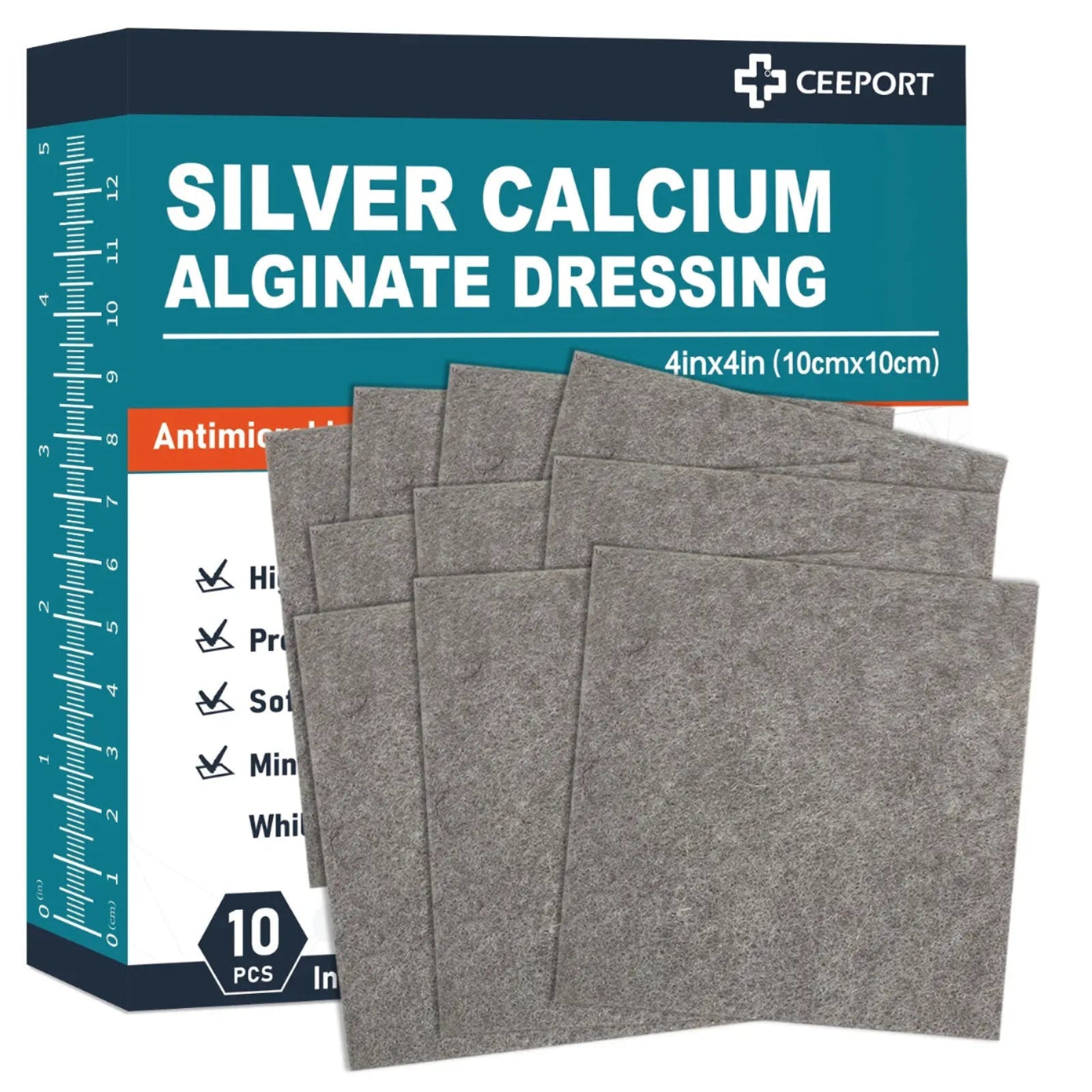

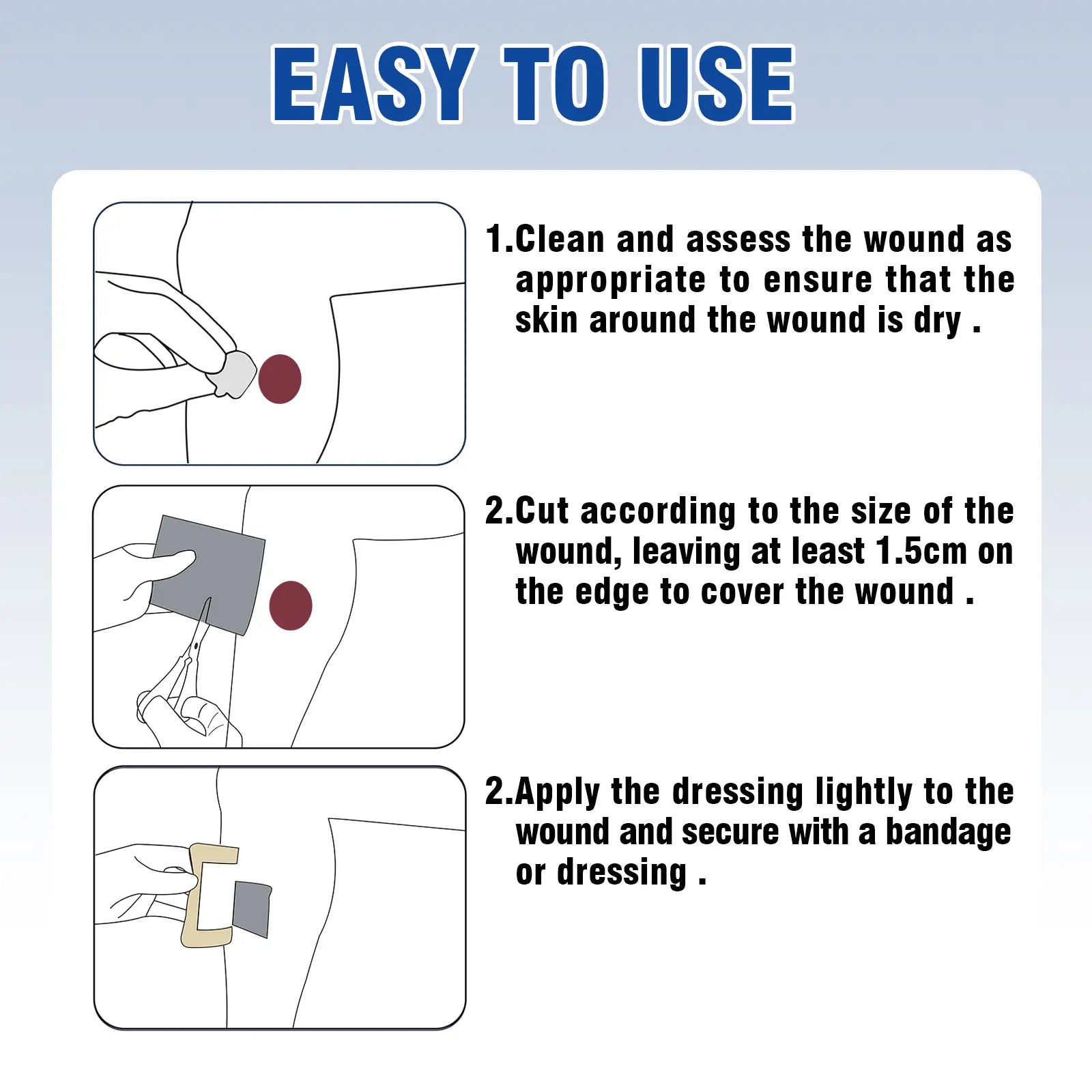
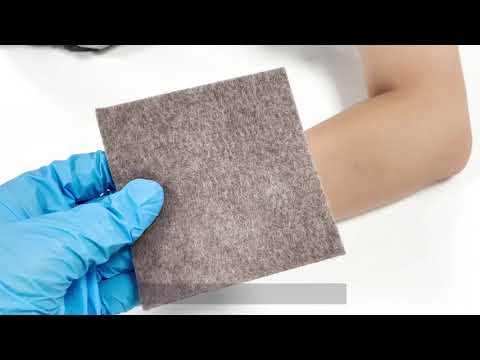
Stop Alginate Dressing Stuck to Wound: Easy‑Release Alginate Dressing Solution
Indications
This dressing is intended for managing high-exudate wounds, including those at risk of bacterial growth or difficult to heal.
It is commonly used for chronic wounds, deep wound packing, donor and graft sites, and other wounds where moisture control and exudate management are essential.
Suitable applications include ulcers, pressure sores, diabetic foot ulcers, surgical incisions, sinus tracts, second-degree burns, and post-operative wounds.

Stop Alginate Dressing Stuck to Wound: Easy‑Release Alginate Dressing Solution
DETAILS
Material
- Alginate fiber
- Silver ions
Main Mechanism
Silver alginate dressings gradually release silver ions when in contact with wound exudate. The level of exudate influences the rate of silver ion release. These ions are known to interact with bacterial cell components, helping reduce microbial activity and supporting a cleaner wound environment.
Silver may also assist in maintaining a balanced microenvironment by modulating ions such as zinc, calcium, and copper—factors associated with skin regeneration and wound care.
Key Features
- High absorption capacity to help manage moderate to heavy exudate
- Silver-infused dressing helps reduce a broad spectrum of microbial activity
- Supports natural hemostasis in exuding wounds
- Maintains a moist environment to support wound care and skin balance
- Soft and flexible design for greater comfort and low-trauma removal
Cautions
- Clean the wound with saline and dry the surrounding skin before use.
- Do not soak the silver ion dressing in saline before use.
- A secondary dressing, such as silicone foam dressing or Island dressing, should be used in combination.
- Based on clinical use, it is recommended to change the dressing every 2-4 days.
- It should not be applied to dry wounds or wounds with exposed bones, muscles, tendons, or fascia.
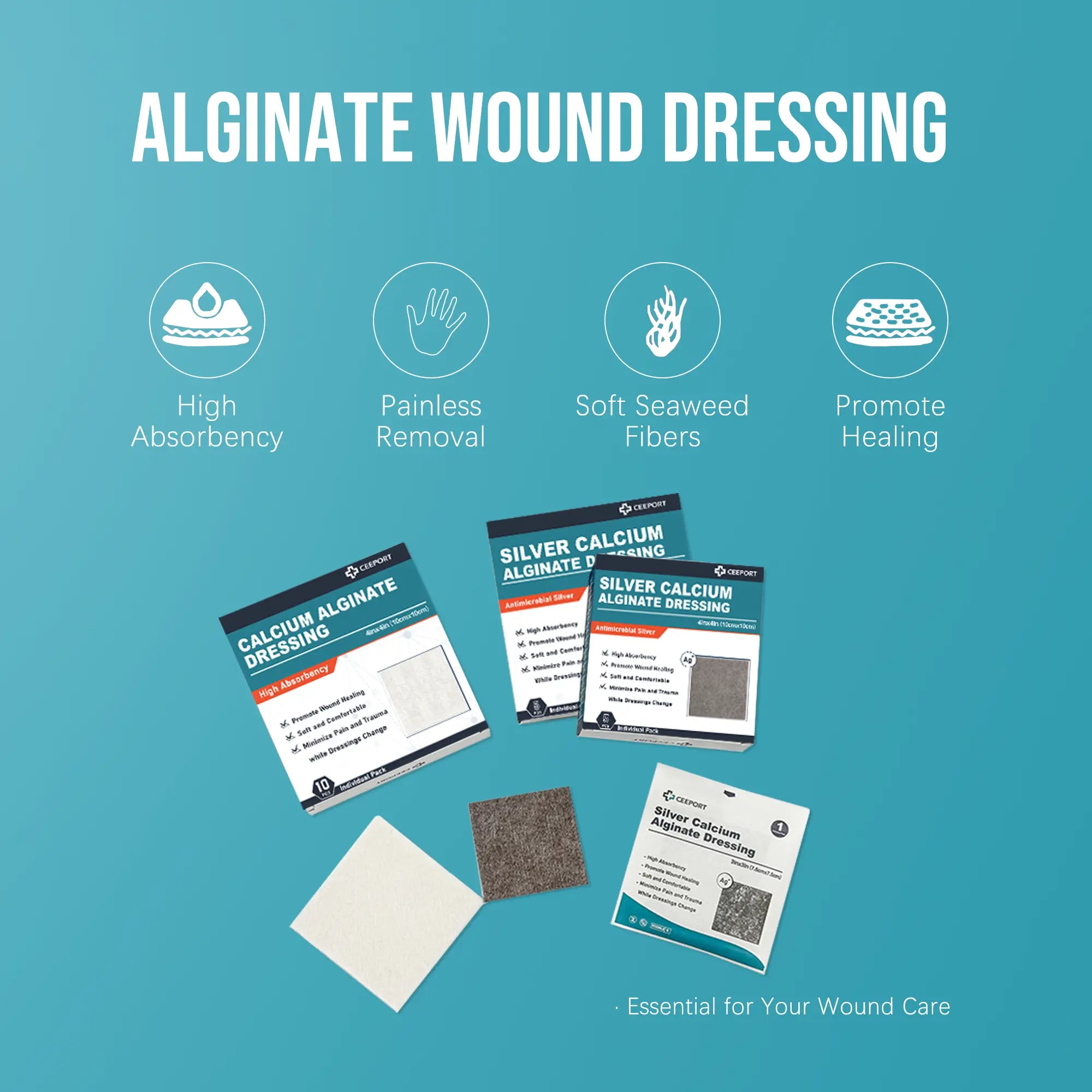
Stop Alginate Dressing Stuck to Wound: Easy‑Release Alginate Dressing Solution
1. Product Overview
Our alginate dressing stuck to wound challenges are solved with this advanced calcium alginate dressing. Crafted from natural seaweed fibers, it rapidly forms a soft, non‑adherent gel on contact with exudate—ensuring your alginate dressing stuck to wound worries become a thing of the past. Ideal for moderate to heavily exuding wounds, this dressing balances moisture and protects fragile tissue.
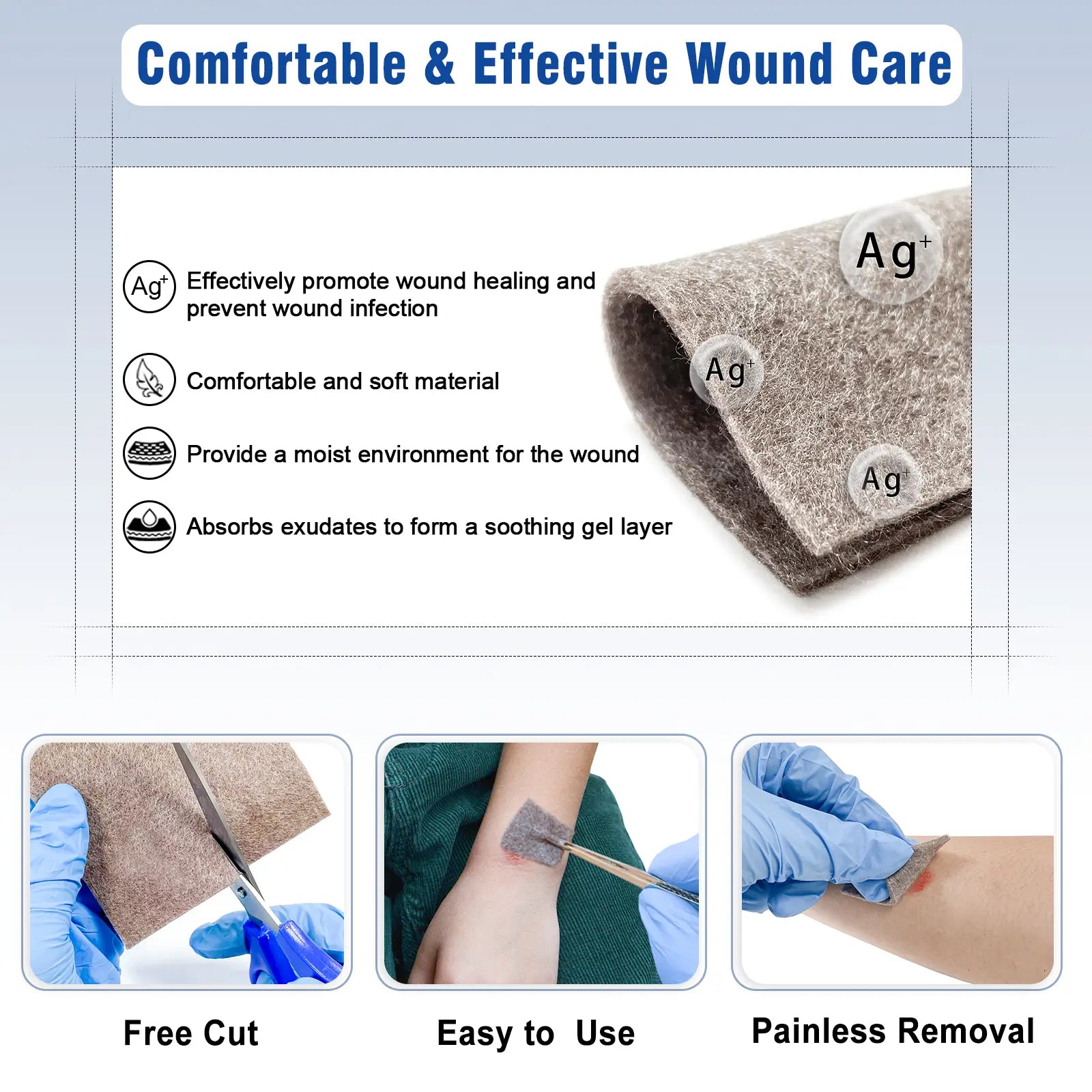
2. How It Prevents Alginate Dressing Stuck to Wound
- Soft Gel Matrix
On contact with wound fluid, the fibers convert into a gentle gel that does not stick, addressing alginate dressing stuck to wound issues by cushioning the wound bed. - Moisture Equilibrium
By locking in excess exudate, the dressing avoids drying out and adhering, solving common alginate dressing stuck to wound frustrations. - Painless Removal
The non‑adherent surface allows removal without tugging or trauma—no more tearing or pain when your alginate dressing stuck to wound normally occurs.

3. Application & Removal Guide
- Clean & Dry: Rinse the wound with sterile saline and pat surrounding skin dry—prevents dressing from sticking.
- Apply Correctly: Cut to extend 1 cm beyond wound edges and place the alginate dressing stuck to wound solution pad directly on the wound.
- Cover & Secure: Use a secondary gauze or bandage; avoid over‑tightening which can increase adhesion.
- Remove with Ease: Moisten the gel layer with saline before lifting—this simple step prevents alginate dressing stuck to wound problems and ensures comfortable changes.
4. Best Use Cases
- High‑Exudate Ulcers: Keeps the dressing from clinging as fluid shifts.
- Traumatic Lacerations: Protects delicate granulation tissue without sticking.
- Surgical Donor Sites: Comfortable, non‑painful removal after grafting.
- Pressure Injuries: Manages wet wounds where alginate dressing stuck to wound is most likely.
Elevate your wound care with our easy‑release alginate dressing—designed to eliminate alginate dressing stuck to wound once and for all.
Easy to Use

Clean
Clean the wound and dry the surrounding skin gently.
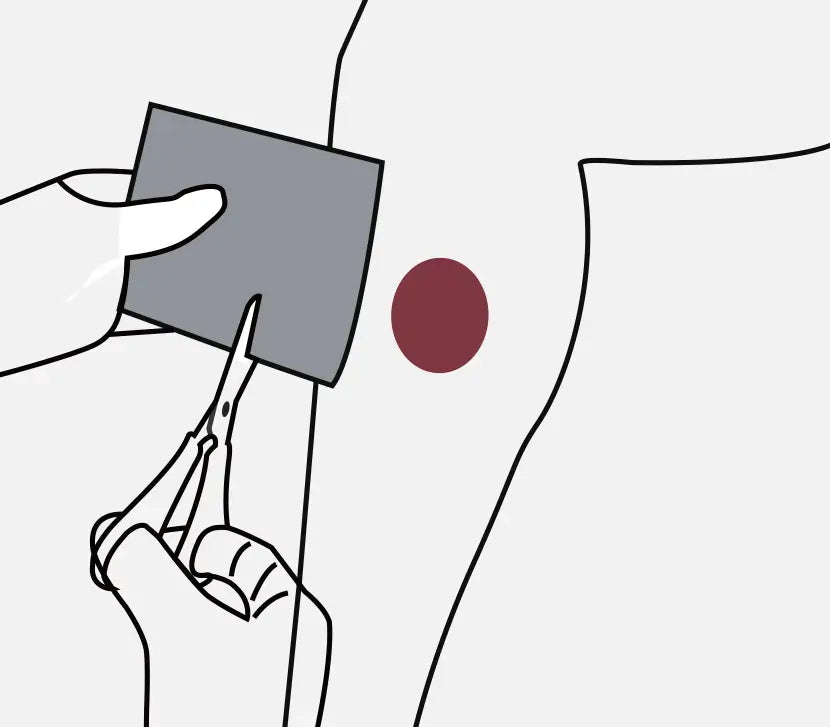
Cut
According to the size of the wound, cut it to the appropriate size.
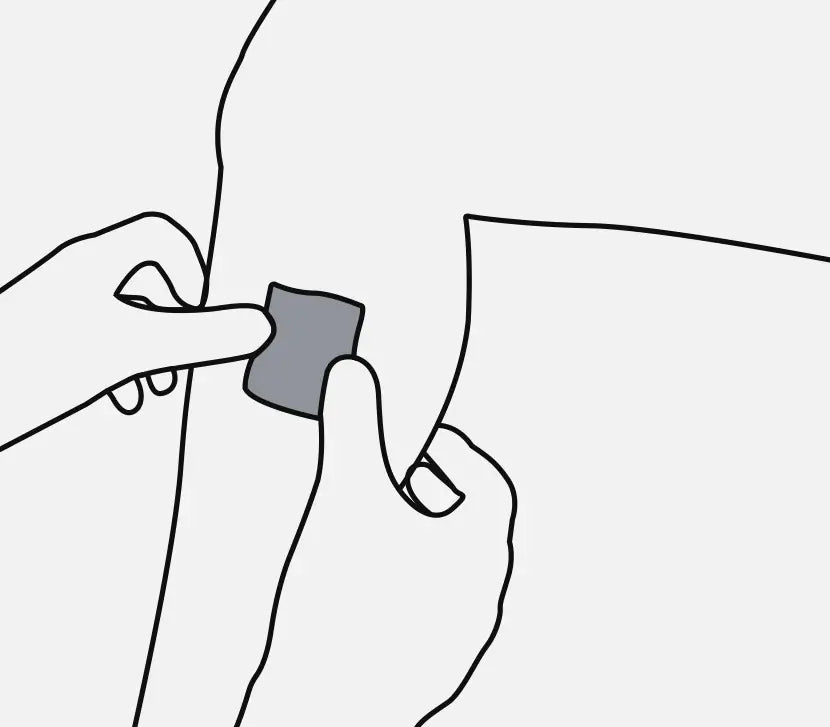
Apply
Apply the wound dressing to overlap the wound edges at least 1 cm.
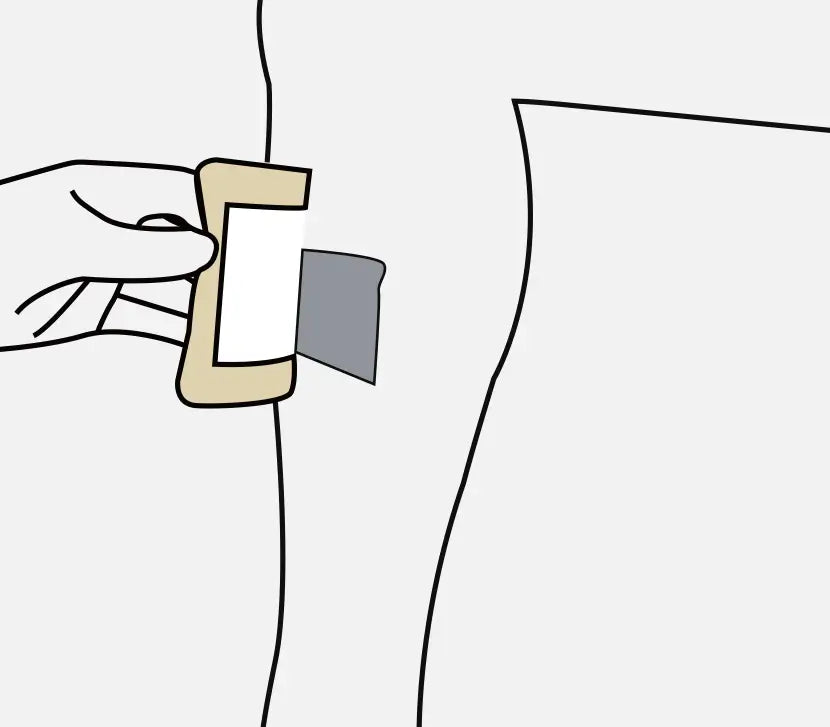
Fixed
Fixed it with a bandage or dressing
You asked, we answered.
What types of wounds is it suitable for?
- Infected wounds or wounds at risk of infection
- Moderate to heavily exuding wounds
- Pressure ulcers (stage II–IV)
- Diabetic foot ulcers
- Surgical wounds
- Second-degree burns
- Traumatic wounds
Can silver alginate dressing be used on non-infected wounds?
Yes, it can be used prophylactically on wounds that are at high risk of infection, but it's generally recommended for infected or critically colonized wounds. For clean, low-risk wounds, a non-silver alginate dressing may suffice.
How much exudate can it absorb?
Calcium alginate with silver are designed to absorb moderate to heavy levels of exudate. When in contact with wound fluid, they form a gel-like substance that maintains a moist wound environment to support healing.
How often should silver wound dressings be changed?
- Moderate to high exudate wounds: Change every 24–48 hours.
- Low exudate wounds: Change every 48–72 hours.
- Signs of infection or dressing saturation: Change immediately.
- Always consult with a healthcare provider for the specific needs of the wound and the patient.
How do I choose the right size?
Ensure that the calcium alginate ag dressing extends at least 1-2 cm beyond the wound edges. This helps to form a seal and prevents the dressing from lifting, while also minimizing the risk of contamination.
How to choose between silver ionized alginate dressing and calcium alginate dressing?
- Choose Silver Alginate Dressing if the wound is infected or at high risk of infection, or if you're dealing with heavily exudating wounds.
- Choose Calcium Alginate Dressing for clean, non-infected wounds that need good absorption, moisture balance, and support for tissue regeneration without the need for antibacterial properties.
Will it stick to the wound?
Silver alginate dressings are better suited for wounds with moderate to heavy exudate. If applied to wounds with minimal fluid, the dressing may not fully gel, which can result in slight adherence to the wound surface. In such cases, gentle irrigation with sterile saline can help soften the dressing and ease removal.
Is it safe for sensitive skin?
Antimicrobial silver alginate dressings are generally well-tolerated. However, individuals with known sensitivity to silver should use with caution. Discontinue use if signs of irritation, redness, or allergic response appear.




